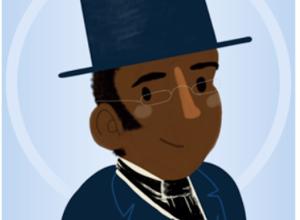Oxford Book Fair Set for April 22-23
The annual PBFA Oxford Book Fair is one of the largest events in the British antiquarian, rare and second-hand book, map, print and ephemera calendar.
In 2017 around 100 dealers will offer tens of thousands of rare and collectable items, ranging in price from £2 to £35,000+.
In the same venue as last year, the Oxford Brookes Wheatley Campus offers good national transport links via rail and road, with ample free on-site parking.
In the past, the Oxford Book Fair has attracted the attention of national media with notable highlights, such as an archive of the First World War aviator who coined the term ‘joystick’ and some of the earliest photographic images of the Thames.
Venue: Oxford Brookes Wheatley Campus, Wheatley, Oxford OX33 1HX, Admission: £2 or free via the website
Opening hours: Sat 22nd April Noon-6pm, Sun 23rd April 10am-4pm
For more information please contact Tom Lintern-Mole on 07921 151496 or tom@lintern-mole.com
HIGHLIGHT TO BE EXHIBITED AT THE FAIR
 The first edition of Howard Carter’s definitive work on the discovery of Tutenkhamen’s tomb, inscribed by the American photographer and subject of recent BBC4 Documentary Harry Burdon, offered at the 2017 Oxford Book Fair by Michael S. Kemp.
The first edition of Howard Carter’s definitive work on the discovery of Tutenkhamen’s tomb, inscribed by the American photographer and subject of recent BBC4 Documentary Harry Burdon, offered at the 2017 Oxford Book Fair by Michael S. Kemp.
CARTER, Howard and MACE, A.C. The Tomb of Tut-Ankh-Amen discovered by the late Earl of Carnarvon and Howard Carter. INSCRIBED BY THE PHOTOGRAPHER. Cassell, 1923 - 33. 3 Volumes. 1st. Editions. Large 8vo. pp. xvi, 231: xxxiv, 269: xvi, 247: photographic plates. Original pictorial cloth, Fine. First volume inscribed "with the compliments of Mr. Harry Burton." £5000
Having resigned as first chief inspector of antiquities in 1905 Howard Carter was unable to return to Egypt until early 1909 when he began his association with George Herbert, fifth earl of Carnarvon. For the next five years they excavated in the Theban necropolis making important, if unspectacular, discoveries. In 1915 Carnarvon was encouraged by Carter to apply for the concession for the Valley of the Kings, one that had been surrendered by Davis and thought by Maspero to be unpromising. Carter thought otherwise.
It was not, however, until 1917, after a spell as a civilian employed by the intelligence department of the War Office in Cairo, that Carter was able to conduct annual campaigns in the Valley of the Kings. Few positive results were achieved and in the summer of 1922 Carter had to use all his powers of persuasion to be allowed to conduct one final campaign in the valley. On 4 November 1922, starting work at first light, Howard Carter opened the stairway that led to the tomb of Tutankhamun. His excitement was reflected in the now famous telegram to Carnarvon. "At last have made wonderful discovery in Valley. A magnificent tomb with seals intact." Carnarvon hurried to Luxor and the tomb was entered on 26 November.
The discovery astounded the world: a royal tomb, full of spectacular objects. On 16 February 1923 the burial chamber was opened to reveal the unplundered body and funerary equipment of the dead king. Despite "handling the technical processes of clearance, conservation, and recording with exemplary skill and care" and presiding over a discovery which reverberated across the world, Carter received no formal honours from his own country.
One of the first people Carter contacted after entering the tomb was Harry Burton, an accomplished art photographer who had gained valuable experience working on the Metropolitan Museum's excavations in Thebes. It proved to be an inspired choice. For not only was Burton able to create a series of remarkable images with what would now be considered as primitive equipment, these images, some 1400 in number, illuminate the excavations and excite the imagination in a way which transcends the text. Burton's photos are more than just a record of the excavation of the tomb. His attention to lighting, texture and composition make them works of art in their own right, capturing as they do the excitement of the greatest archaeological discovery of the twentieth century.
Although we have handled several copies of this work which have been inscribed by Carter, we have been unable to locate a copy bearing Burton's name.















